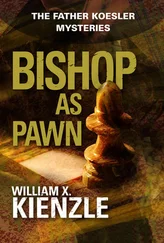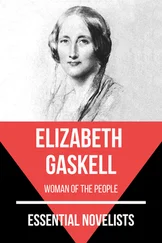The Empire and the Emperor, Pedro II, were synonymous. The chief cause of the fall of the monarchy was undoubtedly the fear of what would happen when Princess Isabel inherited the throne. The Brazilians were suspicious of her husband, the French prince, Count D’Eu (grandson of King Louis Philippe); he was a “foreigner.” Even Princess Isabel’s great gesture, the emancipation of the slaves, couldn’t calm the increasing anxiety about the “French” rule they were sure would follow the death of the sick and prematurely aged Emperor. This is the explanation of how an empire that had lasted for sixty-five years could fall without protest and without struggle.
But the Republic began as an improvised collaboration of ill-assorted elements: the Positivist “clique,” the military group led by Marshal Deodoro, and the great landowners who had been ruined by abolition. (The great number of “Barons” and other titles that appear look strange among the prominent names of the young Republic.) It was a chance collaboration, bound to break up, and it did almost immediately.
The Positivists were the first to disassociate themselves from the new government. “This is not the Republic of our dreams!” they complained. But they left their slogan, “Order and Progress,” on the new flag, and other features of the new regime were influenced by Positivist thought. General Deodoro was the next to go. In spite of having proclaimed the new Republic, he was reluctant to give up his position as an old Imperial General; he disagreed with his former accomplices, fought with the already strong opposition movement in the parliament. He attempted a military coup (or golpe, as Brazilians call it), dissolved the Assembly, and ended by “renouncing”—the first presidential “renunciation.” The Vice President, Marshal Floriano Peixoto, nicknamed “The Iron Marshal” because of his ruthlessness, took over.
His term as president was marked by civil wars and rebellions, two of them very important: the rising of the “Federalists” in Rio Grande do Sul (always the hotbed of rebellion) and the revolt of the Royal Navy, that had never accepted the overthrow of the monarchy and was also jealous of the pre-eminence of the Army in the new government. The “Iron Marshal” stood almost alone but, with the people on his side, emerged victorious from these struggles. The Navy finally joined forces with the south, rebellious admirals with gauchos. In the last bloody battle there, the head of the Navy, Admiral Saldanha da Gama, was killed. Strange to say, Saldanha da Gama is now venerated as the model naval officer — the Brazilian Naval Academy is named for him.
The next president was a civilian from São Paulo, Prudente de Morais, who tried to restore order to the country, divided and exhausted by the struggles of the “Florianistas.” It was also a difficult period. There were no longer riots in the cities nor declarations from the discontented military, but a new phenomenon: religious war in its most brutal form. A strange backlands leader, a sort of rustic saint, appeared, and attracted an immense following of religious fanatics in the arid plains of the northeast. This was Antônio Maciel, called “The Counselor” by his disciples. At first his movement had a religious cast: prayers, penances, forgiveness of sins, and mass pilgrimages of the ever-growing group through the vast wastes of the caatinga, or scrub-forest lands. Then the Counselor announced his new dogma: the Republic was the rule of the Anti-Christ, and they should fight for the return of the “King”—in other words, Dom Pedro II. A long, tragic struggle began. At the beginning it was thought that a mere police-operation, with small numbers of men, could put an end to the movement. But the Counselor’s fanatic followers put up such amazing resistance that the operation assumed almost the proportions of civil war. More and more troops were decimated by the jagunços (a name orignally meaning “ruffian,” but later used for the inhabitants of the backlands in general), entrenched in their stronghold of Canudos, in the harshest region of the interior of Bahia. Many soldiers and officers were killed — even one general. Alarmed, the government organized a full-scale expedition of war, and Canudos was finally utterly destroyed, with its defenders; there were almost no survivors. Today, a great dam across the Vaza-Barris River has flooded the old bloody battlefield of Canudos. The only remaining monument to the siege is Euclides da Cunha’s famous book, Rebellion in the Backlands, (one of the [earlier] masterpieces of Brazilian literature), that had its simple beginnings in his reports as a war correspondent.
The next president, Campos Sales, undertook to straighten out the country’s chaotic financial situation. Under the first two presidents and during the civil war, the country had entered a period of great disorder. The people complained and made bitter jokes, but tightened their belts. They called President Sales “President Selos” (President Stamps) because of the high taxes (and all the stamps the taxes entailed). However, order was restored, money was stabilized, and a period of prosperity began. This period marked the beginning of the remarkable progress of São Paulo, helped by the wave of European immigration that it had encouraged since the beginning of the century.
But the young Republic had still to produce a body of states-men; and in the mixed group of men, idealistic or resentful, that had provoked Dom Pedro’s downfall, there were many quarrels and resignations. So it was natural that when order was restored and the country began to prosper, the men of the old Imperial regime, more gifted and better prepared for the task, came back into power. The newspapers ironically called this new ruling class “the government of the Counselors,” since many of them actually had been Counselors under the Empire. The first was the new president, another Paulista, former Counselor Rodrigues Alves, who did much to beautify the city of Rio and improve its sanitation.
Another Counselor, while a famous Republican, was a figure of great importance for half century: Rui Barbosa (1849–1923), one of the great figures in Brazilian history. He had many talents: a powerful orator, a jurist of the highest calibre, a writer of pure and classical Portuguese. He devoted all his talents to the service of democratic government, and he was famous for his refusal to admit anything approaching the dictatorial, and for his defense of the under-dog. Small and thin, with a weak, nasal voice, nevertheless, he was a formidable opponent, equally respected by popular leaders and famous generals. Too many politicians feared to compete with him, or perhaps they feared his intransigence. The whole nation mourned his death. And until today, in political arguments, the man who manages to quote Rui Barbosa to support his opinions is the one who has the last word.
Another figure who emerged during the Empire and then became a tutelary angel of the Repubic was José Maria da Silva Paranhos — Baron of Rio Branco. With the proclamation of the Republic, he went abroad in a minor diplomatic position. There he stayed, until the government called him back to lend his services as technician and scholar in order to settle the long-disputed question of the Argentine boundary. Rio Branco, a great student of history, argued the case so well that he convinced the arbiter (the American President Grover Cleveland) that Brazil was in the right, and the settlement was favorable to Brazil. In honor of President Cleveland, a vast tract of the recovered territory was named Clevelândia, the name it bears today.
Other questions of disputed boundaries were given to Rio Branco and also settled with profit and honor for Brazil. The Alves government made him Minister of Foreign Affairs, and succeeding presidents, of no matter what party, kept the irreplaceable Baron in Itamaraty (the Department of State). When he died, in 1912, his funeral was the greatest the country had ever seen. Every city in Brazil has one of its principal streets named for him (the Fifth Avenue of Rio is the “Avenida Barão do Rio Branco”); one of the “territories” (not yet a state) is named Rio Branco; and even a huge province of Uruguay is named Rio Branco, in honor of the man who settled its frontier.
Читать дальше












